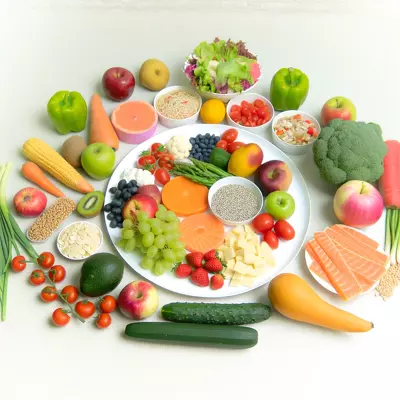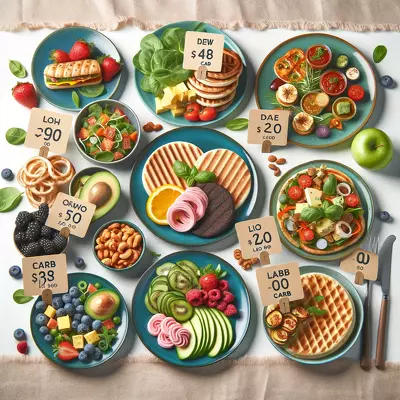Baking Bliss: Whipping Up Easy Healthy Muffins for Toddlers Without a Speck of Sugar
Introducing wholesome muffin recipes tailored for toddlers, these treats are a delight without relying on sugar. Crafted with nourishing ingredients, each bite offers a blend of flavor and nutrition. Perfect for tiny hands and discerning palates, these muffins make snacking both enjoyable and beneficial, setting the stage for healthy eating habits from the start.
I. Introduction to Nutritious Toddler Snacking
A. The Importance of Healthy Eating in Early Childhood
From the moment toddlers take their first steps, they embark on a journey of growth and development that is profoundly influenced by their diet. The foods they consume lay the foundation for their physical health, cognitive abilities, and even their emotional well-being. Introducing various wholesome, nutrient-rich foods early on can foster a lifetime of healthy eating habits. This approach not only supports optimal growth but also instills a natural preference for foods that are both nourishing and delicious.
B. The Challenge of Sugar in Toddler Diets
Navigating the landscape of toddler nutrition can be challenging, particularly with the pervasive presence of sugar in many children’s foods. Excessive sugar consumption is a growing concern, contributing to health issues like dental cavities, weight gain, and even the early onset of lifestyle diseases. Hence, finding delectable yet healthy alternatives, especially for snack times, becomes crucial. This is where the concept of easy, healthy muffins for toddlers, with no added sugar, comes into play, offering a delightful yet nutritious option.
II. Unveiling the Recipe: Easy Healthy Muffins for Toddlers No Sugar
A. Key Ingredients for Nutrient-Rich Muffins
Creating muffins that are both tempting and nourishing for toddlers involves selecting the right ingredients. The base of these muffins includes whole grain flours like whole wheat or oat flour, providing essential fiber and a variety of vitamins and minerals. Natural sweeteners like mashed bananas, applesauce, or pureed dates lend a gentle sweetness without the need for added sugars. Incorporating eggs or a plant-based alternative offers protein, while a mix of healthy fats from sources like avocados or natural nut butter contributes to the overall nutritional profile. Lastly, integrating fruits, vegetables, and spices not only adds flavor and texture but also boosts the muffin’s vitamin and antioxidant content.
B. Step-by-Step Baking Guide
Creating these wholesome muffins is a straightforward process. Begin by preheating your oven and lining a muffin tin with paper liners. In a large bowl, whisk together the dry ingredients. In a separate bowl, mix the wet ingredients, including the natural sweetener of your choice. Gradually combine the wet and dry mixtures, stirring until just blended. Gently fold in any additional ingredients like berries or grated vegetables. Pour the batter into the muffin tin and bake until the tops are golden and a toothpick inserted into the center comes out clean. Allow the muffins to cool before serving, ensuring a perfect texture and flavor.
III. Customizing Your Toddler’s Muffins
A. Flavor Variations Without Added Sugar
The versatility of these muffins means you can adapt the recipe to suit your toddler’s taste preferences or make use of what’s in your pantry. Mix in cinnamon or vanilla extract for a warm, aromatic flavor. Blend in blueberries, raspberries, or diced apples for a fruity twist. For a vegetable-packed version, try incorporating shredded zucchini or carrots. These variations not only keep snack time exciting but also provide an opportunity to introduce your toddler to a wide range of flavors and nutrients.
B. Allergy-Friendly Substitutes
Catering to dietary restrictions or allergies is simple with this muffin recipe. For a gluten-free version, opt for almond or coconut flour. Replace eggs with flax or chia seeds soaked in water if you’re avoiding animal products or dealing with egg allergies. For those who need to steer clear of nuts, sunflower seed butter can be a safe and equally nutritious alternative to nut butter.
IV. Serving and Storage Tips
A. Best Practices for Serving Muffins to Toddlers
When serving muffins to toddlers, size and softness matter. Ensure the muffins are appropriately sized for little hands and easy to bite into. Accompanying the muffins with a source of protein, such as a glass of milk or a serving of yogurt, can round out the snack, making it more satisfying and nutritionally balanced.
B. Storing Muffins for Freshness
Proper storage is key to maintaining the freshness and nutritional quality of your muffins. Once completely cooled, store them in an airtight container at room temperature for a few days. For longer storage, wrap each muffin individually and freeze them. When you’re ready to serve, simply thaw a muffin at room temperature or gently warm it in the oven or microwave, offering your toddler a freshly baked taste any time.
With these guidelines and recipe suggestions, preparing easy, healthy muffins for toddlers with no added sugar becomes a joyful and rewarding endeavor. This ensures that snack time is both nutritious and delightful.
V. FAQs
Q: Can I use frozen fruits for the muffin recipes?
A: Yes, frozen fruits can be used. Ensure they are thawed and excess liquid is drained to avoid overly moist batter.
Q: Are these muffin recipes suitable for adults as well?
A: Absolutely, these healthy muffins are a great snack option for all ages, not just toddlers.
Q: How can I make these muffins vegan?
A: Substitute the eggs with flax or chia seeds soaked in water and use plant-based milk or yogurt.
Q: Can I store these muffins for later use?
A: Yes, once cooled, you can store them in an airtight container or freeze them for a longer shelf life.
Q: Is it possible to make these muffins without any flour for a grain-free option?
A: Yes, you can use almond or coconut flour for a grain-free alternative.
Q: How do I know when the muffins are done baking?
A: The muffins are done when they’re golden on top, and a toothpick inserted into the center comes out clean.
Q: Can I add nuts to these muffins?
A: Yes, you can add nuts for extra texture and nutrition unless you’re catering to those with nut allergies.
VI. Conclusion: Embracing Healthy Snack Options
In the journey of nurturing young ones, embracing healthy snack options like these easy, sugar-free muffins is a stride towards cultivating lifelong wholesome eating habits. These recipes not only cater to the nutritional needs of toddlers but also offer the flexibility to suit different tastes and dietary requirements. By incorporating these muffins into your toddler’s diet, you’re setting a foundation of healthy eating, ensuring they enjoy food that’s as nutritious as it is delicious.
VII. Suggested Readings
Before we delve into the suggested readings, it’s important to recognize the value of continuous learning and exploration in the realm of healthy eating and parenting. The books listed below are carefully selected to provide deeper insights and broader perspectives on nurturing children with wholesome, nutritious foods.
- “The Whole-Brain Child” by Daniel J. Siegel and Tina Payne Bryson – A revolutionary approach to parenting, focusing on developing your child’s brain for a happier, healthier life.
- “How to Raise a Healthy Child in Spite of Your Doctor” by Robert S. Mendelsohn, M.D. – A pediatrician’s perspective on nurturing children’s health without over-dependence on medical interventions.
- “Feeding the Whole Family” by Cynthia Lair – Recipes and advice on cooking wholesome, organic meals for the entire family, toddlers included.
- “The Pediatrician’s Guide to Feeding Babies and Toddlers” by Anthony Porto, M.D., and Dina DiMaggio, M.D. – A comprehensive guide to your child’s nutritional needs from birth through the toddler years.
- “Super Baby Food” by Ruth Yaron – A resourceful guide for parents seeking to prepare nutritious, homemade baby and toddler food.
These books are not just about recipes; they are about understanding the broader context of health, nutrition, and parenting. They provide a wealth of knowledge and insight that can guide you in making informed decisions about your child’s diet and overall well-being. Embrace this journey with an open heart and mind, and watch as your little ones grow and thrive on the path of health and happiness.






